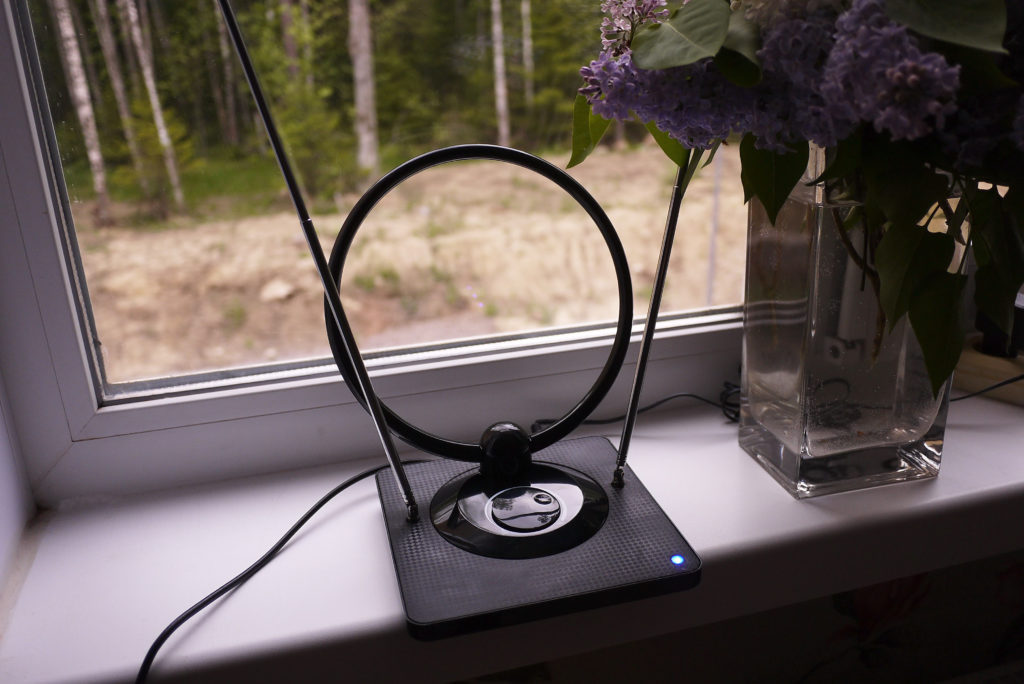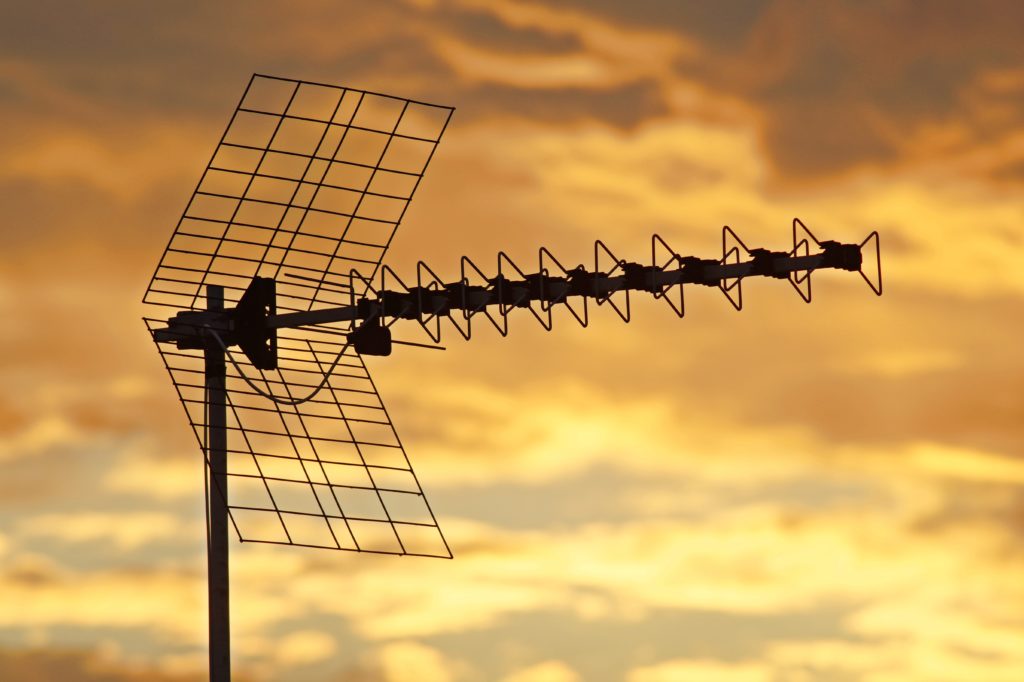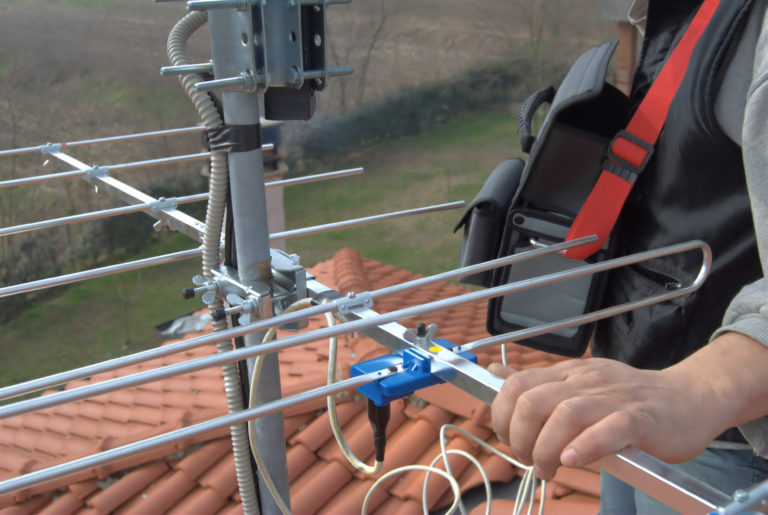Installing an antenna comes with a whole slate of benefits. Depending on where you live, this low-cost equipment can unlock free access to dozens of stations, up to as many as 150 in some locations. Plus, an antenna can deliver high picture quality to your screen, and, with lots of no-cost shows, movies and sports, free over-the-air (OTA) television can be a great way to save money.
If you want to reduce your monthly expenses, installing an antenna to watch free TV can help. But one decision you need to make when shopping for an antenna: Should you opt for an indoor or an outdoor antenna? Both categories of equipment have a unique set of pros and cons.
Before you narrow down your search for a new antenna, here’s what you need to know about choosing between indoor and outdoor antennas for free OTA.
Pros And Cons Of An Indoor Antenna

In a nutshell: Indoor antennas are typically smaller and less cumbersome than their outdoor alternatives, but they also tend to be less powerful. Still, they’re most the practical solution for many people, especially those who live in urban settings.
Here are the pros:
- The set-up is easy. Our testers have found that oftentimes indoor antennas have a user-friendly, plug-and-play type of set-up. Without the requirement of extra tools and DIY skills, indoor antennas can often be up and running within 5-10 minutes.
- The antennas are small and compact. When compared to outdoor antennas, the indoor equipment is smaller and lightweight. Pro tip: If you’re shopping for an indoor antenna, look to see if any installation equipment comes with the indoor antenna, such as mounting hardware or adhesive Command Strips.
- They’re great for apartments. If you live in an apartment building or in an urban area, and you don’t have access to the roof, an indoor antenna is the way to go, points out Antennas Direct. The good news here is if you’re living in an urban area, you’re likely near broadcast towers where you can probably pick up a good number of stations.
Here are the cons:
- Indoor antennas are weaker. Indoor antennas will only work reliably if you live within 20 miles of the broadcast tower, says Tyler Kleinle, who runs the “Antenna Man” channel on YouTube and previously ran an antenna installation business. “Beyond that, you’ll likely need an attic or outdoor setup,” he says.
- Housing materials can block indoor signals. When you’re using an indoor TV antenna, common building materials like brick, metal siding and stucco can reduce the incoming signal and make it difficult to receive some channels. Electrical items inside your home, including things like blenders, microwaves and even LED light bulbs, can disrupt your signal, according to the Antenna Man.
- Indoor antennas can add some visual clutter. Yes, some indoor antennas are discreet. There are even some that are flat, resembling a mouse pad, placemat or sheet of paper. The antennas with sleeker designs don’t add much visual clutter and can strategically blend in with your home decor. But to get the best signal, you need to place them in or near a window and the extra cords can add a little visual clutter to your space.
Pros And Cons of An Outdoor Antenna

In a nutshell: Outdoor antennas tend to outperform indoor antennas, but the set-up is much more involved and costly.
Here are the pros:
- You’ll get more channels: The biggest pro of a an outdoor antenna is that without any housing materials in the way, you should be able to pick up far more channels. While indoor antennas can pick up channels from broadcast stations within a 20-30 mile radius, the reach of an outdoor antenna is about 60 to 80 miles. Because of this, outdoor antennas can be a worthwhile investment for those who live in the suburbs or slightly more rural areas.
- You’ll get a stronger signal: Compared to indoor TV antennas, outdoor antennas have better line-of-sight to the transmitter, which gives better signal strength and quality. This could translate to fewer signal glitches when you’re watching TV.
- You don’t “see” the antenna when you’re inside: Really, this could fall into the pro or con category. An outdoor antenna is out-of-sight, out-of-mind when you’re indoors. But, the clunkier ones can be a bit of an eyesore on your rooftop. However, worth noting: HOAs, which can limit everything from the paint color of your door to your landscaping, mostly cannot limit antennas because of FCC regulations.
Here are the cons:
- They may take longer to install. Unlike the intuitive setup of indoor models, the ideal location for an outdoor antenna is on your roof which will likely involve hiring a professional. Otherwise, you’ll need to break out the ladder and toolbox or opt to mount the antenna in your attic which can hamper your signal. This project includes several tasks and tools, including mounting your antenna and running a coaxial cable from your rooftop antenna to the TV in your home.
- You’ll need weather sealants: You’ll need to apply various kinds of sealants to waterproof any openings or holes drilled during the installation, according to an installation guide from Long Range Signal. This could include things like silicone caulk, roofing tar and moisture-proof sealing tape. Also you’ll want to weatherproof your coaxial cables because moisture can disrupt the signal.
- They’re more expensive: The cost of TV antennas varies. However, many of the indoor models are in the $20-30 range. But most outdoor antennas come with a higher cost. While you can find some in the $40-$50 range, quality options are priced between $100-$200. Plus, you’ll need to factor in the cost of installation if you’re not installing the equipment yourself. However, this is a one-time cost and you’ll be able to enjoy access to free TV for years to come.
How To Get The Most Out Of Your Antennas
- Consider direction. No matter if you have an indoor or outdoor antenna, you’ll want to consider the direction of broadcast stations and position your antenna in the direction in which the signal originates. This information can be found on antennaweb.org. An indoor antenna should be placed in or near a window pointed in the direction of the broadcast towers of ABC, NBC, CBS, and Fox, Kleine says. If possible, you’ll want to place your antenna higher in your home, perhaps an attic or near a second-story window, recommends Consumer Reports. This will add an extra step, though, as you’ll need to run a cable through your home. However, it’s most convenient to place an antenna in the same room as your TV. If placing it in a window is not possible, higher on the wall near the ceiling may also work, but it’s worth playing around with the positioning to see where your antenna picks up the most channels. If you have an outdoor antenna, you can talk with your neighbors who already have antennas installed to see which direction worked best. Also, while you’re installing an outdoor antenna, be sure to have someone on the ground to do a channel scan and check different positions of your antenna before mounting it.
- Perform frequent channel scans. You’ll need to do this when you first set up your antenna, but you may be missing out on some channels that you can pick up at a later date.
- Try an amplified antenna model. If you experience breakup on some channels, an amp can help boost signal strength, potentially giving you better picture quality and access to more channels, according to Consumer Reports.
The bottom line: Regardless if you go with an indoor or outdoor antenna, you’ll be able to access TV for free. But circumstances like where you live and how much time and money you want to invest in an antenna can all dictate whether you should opt for an indoor or outdoor antenna.




